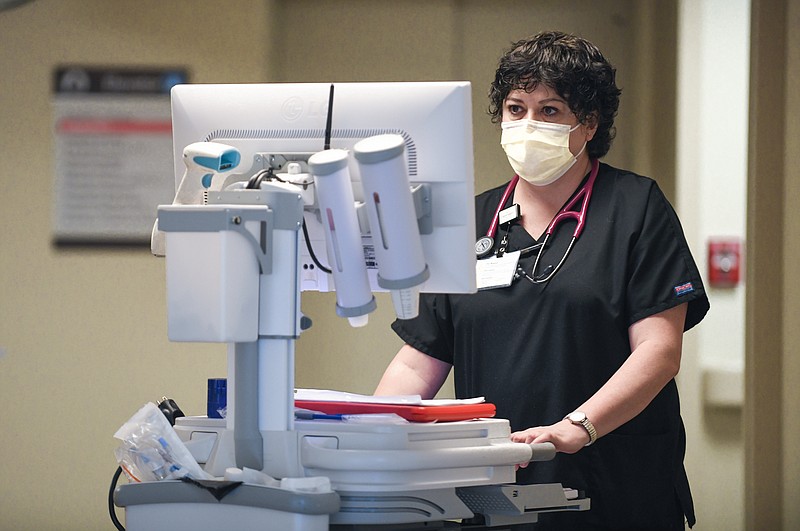Communities have striven for years to overcome nursing shortages.
The annual Missouri Department of Commerce and Insurance Nursing Workforce Report details the efforts the state is making.
The state's 2020 report, released last week, provides insights into how nursing affects health care needs of Missourians, according to an MDCI news release.
The report was assembled using data from the Missouri Division of Professional Registration Board of Nursing Registry and Nursys. Nursys is a national database for verification of nurse licensure, discipline, and practice privileges for registered nurses and licensed practical nurses (using data from state boards of nursing).
As of June, there were 123,589 licensed nurses in Missouri.
Registered nurses made up the lion's share of nurses - 75.5 percent - followed by licensed practical nurses at 16.4 percent and advanced practice registered nurses at 8 percent.
The report shows most of Missouri's nurses work in metropolitan counties and micropolitan areas - those urban clusters that have populations of at least 10,000 but fewer than 50,000.
The researchers included Callaway, Cole, Moniteau and Osage counties as part of a metropolitan cluster that includes Boone County.
At 77 per 10,000 population, the rate in rural counties is low compared to their counterparts in more urban areas (118 per 10,000 population in micropolitan and 156 per 10,000 in metropolitan).
"Identifying geographic shortages can assist nursing regulatory bodies, nursing education programs and employers with developing education models that can alleviate the shortage," according to the MDCI news release.
Cole County has 1,366 nurses (RN, APRN and LPN), according to the data.
Boone County boasts 3,515 nurses. Meanwhile, Callaway County has 269; Camden, 572; Miller, 98; Moniteau, 71; and Osage, 44.
An effort Missouri took in 2019 to combat nursing shortages, approving an "earn while you learn" education model, allowed fourth-semester associate degree nursing students to earn wages while participating in hands-on clinical instruction through an apprenticeship model.
The Missouri State Board of Nursing in 2019 approved a "nursing home - nursing education" model in a rural county, allowing the nursing home (which was dealing with a severe nursing shortage) to "grow" its own licensed nurses.
New education strategies must be evaluated for effectiveness, Missouri State Board of Nursing Executive Director Lori Scheidt said in the news release.
"A one-size-fits-all approach is not appropriate to solve the regional shortages," she said.
The report states "the low number of nurses employed in rural counties often coincides with a shortage of health care providers and facilities, including hospitals, urgent care and other health care services."
There are fewer job opportunities in those areas, the report says.
The workforce report points out a high percentage of nurses ages 55-64 are nearing retirement.
Generally speaking, the report finds the average age of nurses in each license type is similar - LPNs average 45.2 years old, RNs average 45.7 years old and APRNs average 46.5 years old.
Among the population of LPNs and APRNs in Missouri, the most common age is 35-44. For RNs, the most common age range is 25-34. However, 24,074 (30.3 percent) RNs are ages 55 and older and may retire in the near future.
Half of the nursing workforce for each of two counties - Dekalb County (in rural northwest Missouri) and Reynolds County (within the Mark Twain National Forest) - are 55 or older. In Worth County (also in northwest Missouri), 58.3 percent of working nurses are 55 or older. All three counties are sparsely populated.
"By examining the average age of nurses in geographic areas, nursing regulators can examine solutions that might address future shortages," the release says. "It stands to reason that if nurses enter the profession at an earlier age, the average age of nurses would decrease."


